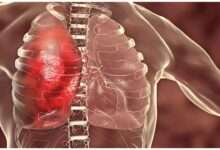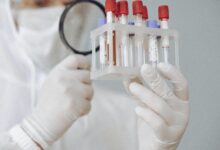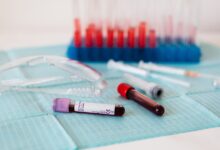
The causes of adenomegaly
This abnormal swelling is the consequence of too much stress on the immune system. The lymph nodes play an essential role for its proper functioning and the increase in the size of the lymph nodes becomes the sign of an attack on the organism.
The increase in the lymph nodes, also called lymphadenopathy, manifests itself in various places: at the level of the thorax, the cervical, the armpits or even at the level of the groin.
Benign causes
Benign causes of lymph node enlargement include:
- sarcoidosis (general disease of the body of unknown cause);
- tuberculosis, discovered particularly following mediastinal lymphadenopathy;
- and other curable infectious diseases, such as mononucleosis caused by the Epstein-Barr virus, etc.
Malignant causes
There are malignant causes, including:
- tumours, cancers and metastases, such as Hodgkin’s or non-Hodgkin’s lymphoma, also very often diagnosed via mediastinal adenopathy (following chest X-ray);
- autoimmune diseases: in particular lupus, or rheumatoid arthritis;
- more severe infections, such as those linked to the AIDS virus, HIV, or viral hepatitis, etc.
The causes of lymph node enlargement: link to their role in immunity
Lymph nodes are one of the elements of the lymphatic system (together with lymphatic vessels, lymph, lymphocytes). Their role is to clean and filter the lymph. They also play an essential role in the body’s immune response, and therefore in its defences.
Thus, it is in these lymph nodes that the presentation of antigens (foreign bodies such as bacteria, viruses or parasites) to the immune system (ie white blood cells) takes place.
Following this antigenic presentation, the body’s immune response is triggered, against infectious agents or the body’s own abnormal cells (often tumors).
This response involves either the production of antibodies by B lymphocytes (also called humoral immunity) or a cellular response, also called cytotoxic response, which involves CD8 T cells (response also called cellular immunity).
The hypertrophy observed in the case of adenomegaly is explained by this activation of the immune response: the number of lymphocytes (cells of the ganglion) multiply strongly, which leads to an increase in the size of the lymph node.
It also happens that cancer cells infiltrate the lymph node and further increase its size. Inflammation cells can multiply here, even the ganglion’s own immune cells, giving rise to lymph node cancer.
The risks of complications of adenomegaly
The main risks of complications of adenomegaly are in fact linked to its etiologies.
In the case of tumours, the pathology can evolve into a malignant tumor or even into the appearance of metastases, that is to say the dissemination of cancerous cells at a distance from the adenopathy.
In the case of HIV infection, the AIDS virus, the complications are those of acquired immunodeficiency, ie a significant risk of contracting all types of infections.
Autoimmune diseases also have an evolution at risk of significant complications, which can cause severe pain and serious disabilities.
Treatment and prevention of adenomegaly
The treatment depends on the diagnosed disease (the disease related to lymph node enlargement). It could be :
- antibiotic or antiviral treatment, or even antiparasitic, if the presence of an increase in the ganglion is due to a pathogenic agent (bacteria, virus or parasite);
- an anti-cancer treatment (in the case of a tumour) which may combine radiotherapy and chemotherapy;
- immunosuppressants in the case of autoimmune diseases, for example.
- surgery to remove the ganglion.
Adenomegaly is therefore a symptom that must be detected as soon as possible. In case of doubt, it is important to report it quickly to the attending physician. The latter can carry out the clinical examination by palpation when an abnormal mass is felt in the cervical, axillary or inguinal regions.
In the case of mediastinal lymph nodes, he may request a control chest X-ray. This healthcare professional can decide which treatment to start or which specialist to consult. Adenomegaly detected and treated quickly will have a better chance of healing easily.














